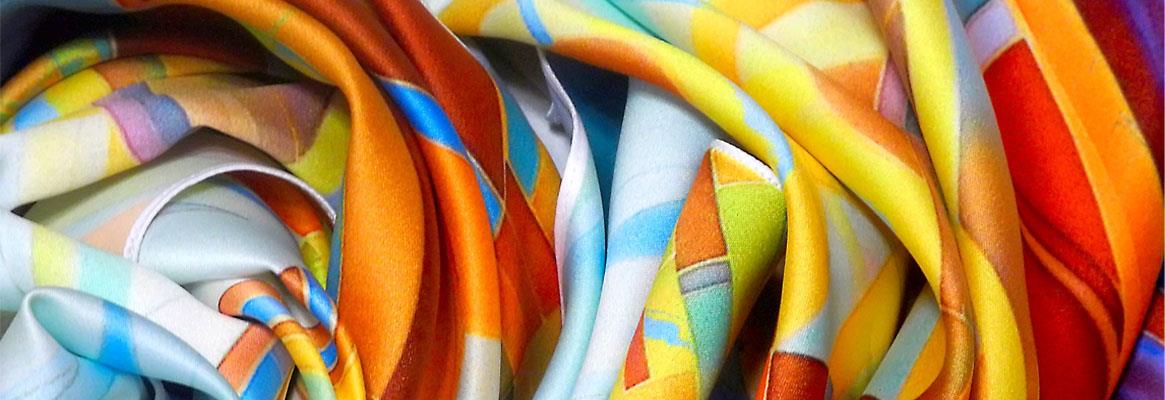The fashion industry is continuously evolving. From store shopping to e-commerce and conventional printing to digital printing – the industry is all set for a transformation.
The future of fashion is demanding innovation, customization, and digitalization. The industry is not going to settle for anything less – from farming to shipping at customer’s address; the textile industry is adding digitalization everywhere. The digital landscape is now – and will always be an integral part of the textile industry.
The textile industry has many digital tools and machines reshaping the entire process of farming, spinning, printing, manufacturing, and supplying. The digital textile printer is one of those amazing tools.
Textile printing has a rich and colorful history of producing attractive designs on fabrics. But no one can deny a fact that conventional textile printing is time-consuming and resource consuming.
“Dye Sublimation is Adding More Colors to the Digital Textile Printing.”
While dye sublimation printing is fast proofing, cost-effective, and inevitably produces designs of high-resolution. Besides this, dye sublimation printing has the following advantages:
- More flexibility
- Low capital investment
- Less wastage
- Low sampling cost
- More customized
- Less electricity
- No inventory
- Nickle size
By offering all these advantages, digital textile printing is adding more luxury to the textile printing industry. The global market of digital textile printing is expected to grow at the rate of 18 percent annually.
India’s Response Towards Dye Sublimation Textile Printing
The data indicate that after a decade of advances in digital textile printing technologies, a minute percentage (1%) of India’s printed textiles are produced digitally. The most common fabric used for digital printing is polyester and printing is done by using Dye Sublimation.
In India, the growth of dye-sublimation digital print can be seen after 2010, from a low base from 2011 onwards. The country has great potential to lead the digital printing market for the textile. Big market drivers are – high demand for graphic prints, innovation in apparel, growing demand for creative apparel, buying pattern, and heat transfer printing acceleration.
Pira International reported that the Indian digital printing market is projected to reach US$ 177.9 million by 2022.
Growth of Dye Sublimation Printing
With the growing demand for creativity, innovation, and customization – digital textile printing is touching a new sky every year. The current growth rate of digital textile printing in India is 25 percent and is expected to grow at a steady pace. The growing demand for digitally printed apparel is boosting the use of digital textile printers simultaneously.
The global market of dye sublimation is projected to grow at a CAGR of 16.8 percent during the forecast period 2019-2024.
Around 384 million square metres of fabrics were printed through the dye- sublimation printing process in the year Q1 2016. This is set to rise to 892 million square metres in 2021. The major end-use segments are garments, household, technical and visual communication, and technical textiles.
The major market drivers are:
- Growth of E-commerce Industry
- Elimination of textile waste
- Development of new technologies
- Shortening life-span and faster adaptability of fashion designs
- Increasing demand for sustainable printing
Digital textile printing is booming in India and creating numerous opportunities across the value chain.
The most accepted concept of digital textile printing is Dye sublimation of digital textile printing due to its properties – colorfastness, non-solubility, and resistance to damage. HP offers two products in digital textile printing Stitch S500, and HP Stitch S1000. These printers are ranged from entre-level to voluminous printing. All the printers are suitable for various applications –ranging from sportswear, soft signage, interior decor, and fashion.
Know More about the HP S Series!
Final Thought
The textile industry across the globe is embracing digital printers to produce more creative and innovative solutions. According to industry experts, the future of fashion is going to revolve around customization. The fashion industry is going through an evolution where consumers are more powerful than ever. Consumers are getting their fashion goals in terms of size, shape, prints, and colors.
The era has begun where digitalization is vital to fulfil consumer’s needs and market demand. The runway during a fashion week to stores and finally to customer’s wardrobes is quicker than ever.
HP understands the choice of customers. HP’s S series of printers’ leverage business to give more personalized solutions to their customers.
Interested to Know More about Dye Sublimation Printing?












Comments